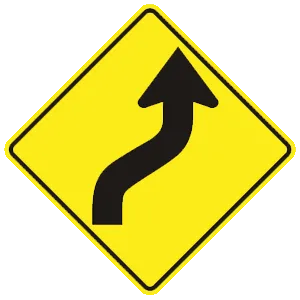Motorcycle Test | License OH 2025 | FREE Online Practice! #2 Page 4 of 5
Take this FREE motorcycle test (license in OH 2025) to check your knowledge of the road rules. To improve your results, download a motorcycle handbook online, study theory, and practice for free on our website. Still worried about how to get a motorcycle license in Ohio in 2025? Check our website for more sample tests, train as much as possible, and boost your grades!
25 . When looking through a turn to see where you are going, you should:
When making a turn, look through the turn to where you want to go. Turn only your head, not your shoulders, and keep your eyes level with the horizon.
26 . After riding over an object on the road, you should:
After riding over an object on the roadway, you should pull off the road to check your tires and rims for damage before traveling any farther. Ensure that nothing is caught in the drive chain or belt before proceeding.
27 . If your motorcycle has convex mirrors and you are not familiar with this type of mirror, you should practice using the mirrors because:
In comparison to flat mirrors, convex mirrors provide a wider view of the road behind you. They also make objects seem farther away than they actually are. Take the time to get used to your mirrors if your motorcycle is equipped with convex mirrors.
28 . When riding a motorcycle, you should:
There is no one lane position that is always best, nor one that should always be avoided. Change your lane position as necessary based on changing road and traffic conditions.
30 . Which of the following surfaces is unlikely to provide poor traction for motorcyclists?
A number of surfaces can provide poor traction for tires. Wet pavement; roads covered in loose gravel or sand; muddy, snowy, or icy areas; painted lane markings; and metal covers and plates in the road can be more hazardous for a motorcyclist than dry pavement.
31 . When riding in a group, the best formation for keeping riders together while maintaining adequate space cushions is generally:
In general, the best way for a group of motorcyclists to maintain close ranks while still allowing each rider an adequate space cushion is to ride in a staggered formation.
32 . This sign means:

Warning signs are used to warn drivers about upcoming hazardous conditions and are usually yellow with black markings. This sign warns drivers that the road ahead curves to the right and then to the left.
See the exact questions that will be on the 2025 Ohio DMV exam.
99.2% of people who use the cheat sheet pass the FIRST TIME
Jeneen was tired of paying $5/gallon. She got herself a scooter that required the motorcycle license. She studyed the motorcycle test cheat sheet and passed her test the next day!
Christopher tells us how he knew nothing prior to obtaining the motorcycle study guide, and he only got one question wrong because he clicked on the wrong answer by mistake.




